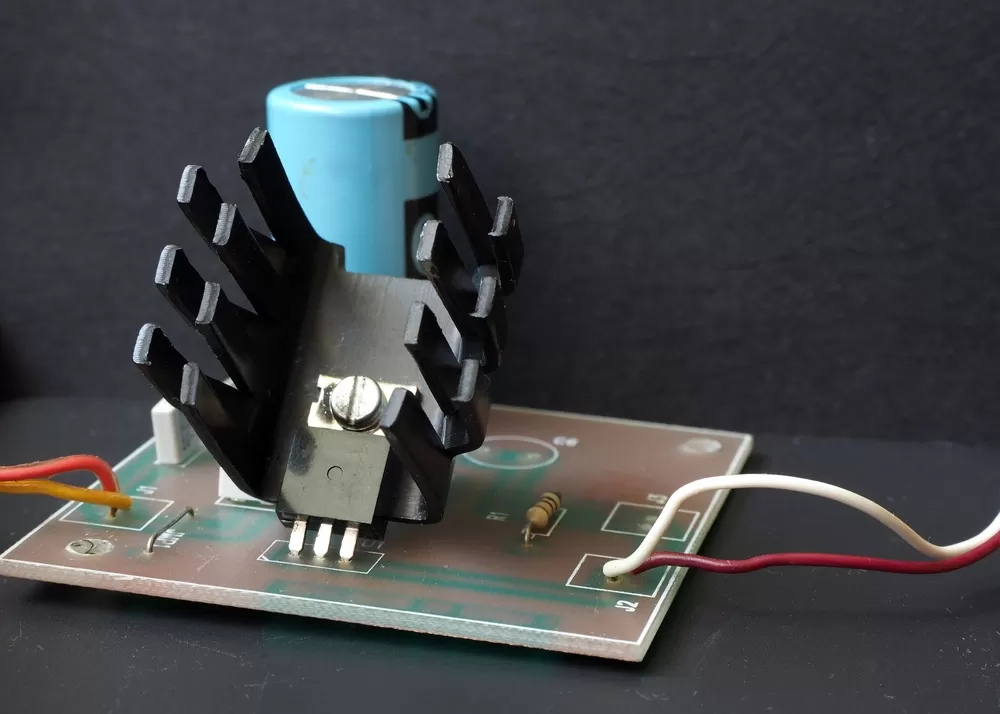In accordance with the European Union’s General Data Protection Regulation (GDPR), we are committed to safeguarding and ensuring your control over your personal data. By clicking “Accept All” you are permitting us to use cookies to enhance your browsing experience, assist us in analyzing website performance and usage, and deliver relevant marketing content. You can manage your cookie settings below. By clicking “Confirm” you are agreeing to the current settings.
How to Calculate Heat Dissipation to Prevent Overheating?

What is Heat Dissipation?
Heat dissipation refers to the transfer of thermal energy from a heat source to a cooler medium via conduction, convection, or radiation to prevent system overheating. In electronics, CPUs use heat sinks composed of aluminum or copper to handle thermal loads beyond 100 W/cm².
High-performance GPUs use glycol-based liquid coolants to remove heat at rates beyond 300 W with minimum thermal resistance. Under load, radiator fans in vehicle cooling systems may disperse heat from engines running at ~90°C, releasing ~20 kW of heat. Precision in heat dissipation efficiency is key; each 10°C increase in temperature halves the silicon device's life.
Key Factors Affecting Heat Dissipation
Power Consumption and Heat Generation
Heat dissipation correlates with power consumption. Electronic components consuming higher power, including CPUs and GPUs, generate heat due to resistive losses. The losses scale with I^2R. Here, I is current, and R is resistance. Also, data centers running 10 kW racks may fail to dissipate up to 80% of energy as heat. Cooling designs like immersion cooling systems might help. Optimizing unnecessary power losses and circuit efficiency control thermal dissipation.
Surface Area Enhancement
Increasing surface area increases heat dissipation through conduction and convection. Cooling fins have appropriate designs to maximize surface exposure. For example, CPUs might use heat sinks with surface areas above 10,000 mm² for energy transfer. Additionally, vehicle engines, including motorcycles, feature ribbed fins to enhance airflow contact and improve cooling efficiency. The mathematical relationship Q=hAΔT illustrates how a larger A amplifies the heat transfer rate. 3D-printed heat sinks with fractal geometries exemplify innovations in expanding surface area.
Material Conductivity
Materials with high thermal conductivity guarantee rapid heat dissipation. Copper and aluminum are preferred for heat sinks and PCB layers. For example, LED modules may use copper bases to handle concentrated heat loads, say 25-50 W/cm². Conversely, low-conductivity plastics or ceramics are used in thermal insulation to limit dissipation. Graphene can have conductivity above 4000 W/m·K. It promises transformative advancements in heat management solutions.
Temperature Gradient Influence
A higher temperature difference between the heat source and surroundings accelerates heat dissipation. According to Newton's Law of Cooling, Q=k(Thot-Tcold), doubling the gradient can approximately double the transfer rate. For instance, thermal dissipation from CPU cores at 90°C is faster in 20°C environments versus 40°C. Thermal management must keep low ambient temperatures through forced convection or liquid cooling. Cryogenic cooling pushes these temperature gradients even further in high-performance computing systems.
How to Calculate Heat Dissipation

Basic Heat Dissipation Calculation
To determine heat dissipation, first calculate power consumption using P=V×IP = V \times IP=V×I, where P represents power (W), V is voltage (V), and I is current (A). Here, P is power in watts, V is voltage, and I is current. It tells you how much energy converts to heat during operation. Verify current and voltage under actual load conditions. Variations can cause miscalculations. For AC systems, power factor corrections refine estimates of thermal dissipation in real-world scenarios.
Thermal Resistance and Temperature Rise
Thermal resistance links heat dissipation to temperature changes. The formula ΔT=P×Rth (Rth is thermal resistance in °C/W) predicts how much a component heats under load. For modeling, include both junction-to-case and case-to-ambient resistances. Further, check for non-linear changes in Rth at higher temperatures; material properties may degrade under thermal stress.
Heat Transfer via Conduction
When heat dissipation depends on conduction, Fourier's Law is key: Q=kA(Thot-Tcold)/d. High k materials, including copper or aluminum, enable efficient heat flow. Thin materials and large contact areas also augment transfer rates. Nevertheless, surface imperfections or thermal interfaces add resistance. Use thermal pads or compounds to decrease such effects. Re-evaluate interfaces because wear or contamination can degrade performance over time.
Convective Heat Transfer
For systems using air cooling, use Q=hA(Tsurface-Tair). The h coefficient changes with airflow speed, direction, and surface texture. Increasing turbulence or using fans adjusts h. Confirm that components have clearance for better airflow and lower hotspots. Also, humidity and altitude impact h. So, adjust calculations to reflect operating environments for consistent heat dissipation.
Practical Steps for Optimizing Heat Dissipation
Choose High Thermal Conductivity Materials
Material selection is key to optimizing heat dissipation. Aluminum has a thermal conductivity of approximately 237 W/m·K, and copper has about 401 W/m·K. Both are the most effective choices. For instance, copper might be used for localized high-heat zones in combination with aluminum for weight and cost efficiency. Carbon-based composites can also have high values and suit ultra-high-performance needs, including aerospace electronics. For interface layers, thermal pads with enough conductivity ratings minimize resistance between components. Precision in material layering gives efficient pathways for thermal dissipation in compact electronic systems.
Maximize Surface Area
Increase the effective surface area to the cooling mediums for better heat dissipation. For example, microchannel fins in heat sink designs offer greater performance with dense airflow interaction. A standard rectangular heat sink with multiple fins can enhance heat transfer efficiency when fin spacing and orientation optimize airflow dynamics. Besides, using pin-fin arrays with circular or elliptical pins improves convective cooling in constrained CPU enclosures. Calculate optimal fin pitch and thickness to balance airflow resistance and thermal performance.
Implement Active Cooling Solutions
Active cooling is indispensable for systems with high heat loads. For example, liquid cooling loops with water as a medium can dissipate heat faster than air due to water's thermal conductivity of 0.6 W/m·K and specific heat capacity of 4.19 kJ/kg·K. In data centers, active cooling systems with liquid immersion keep GPUs and processors at operating temperatures under continuous full load. Similarly, centrifugal fans with variable speed controllers can modulate airflow. They maintain heat dissipation and conserve energy. Validate compatibility between active components and system power constraints for performance.
For further consultation or to customize a heat dissipation solution, please contact us.
